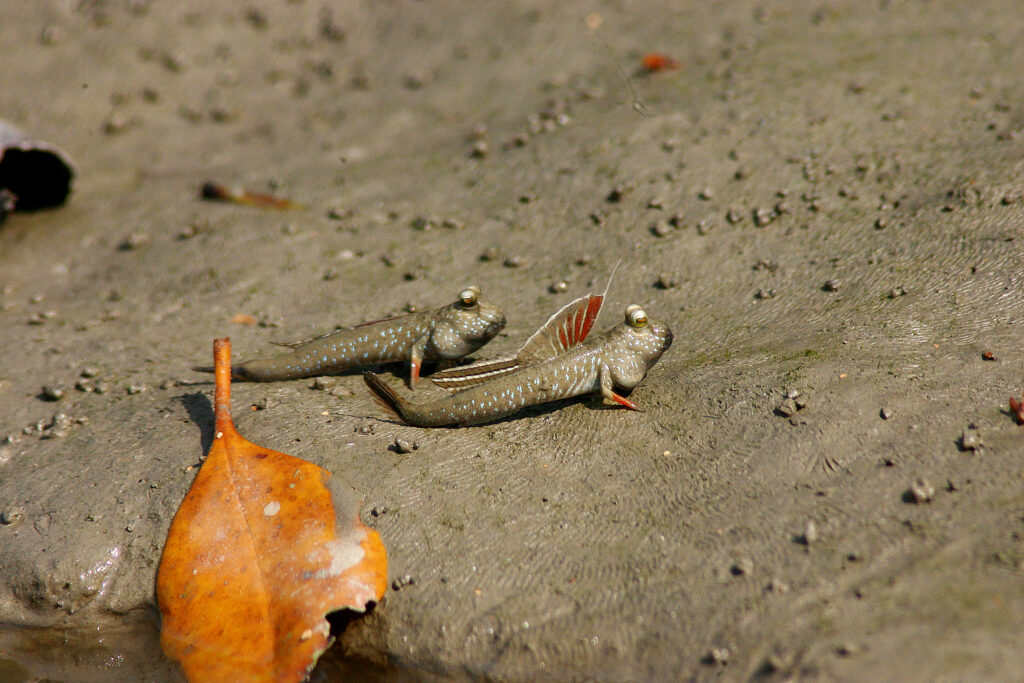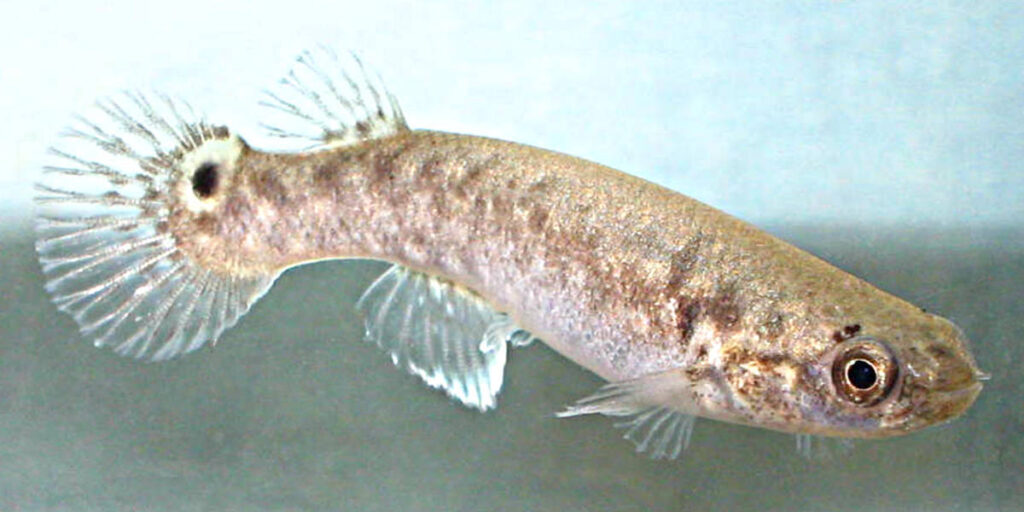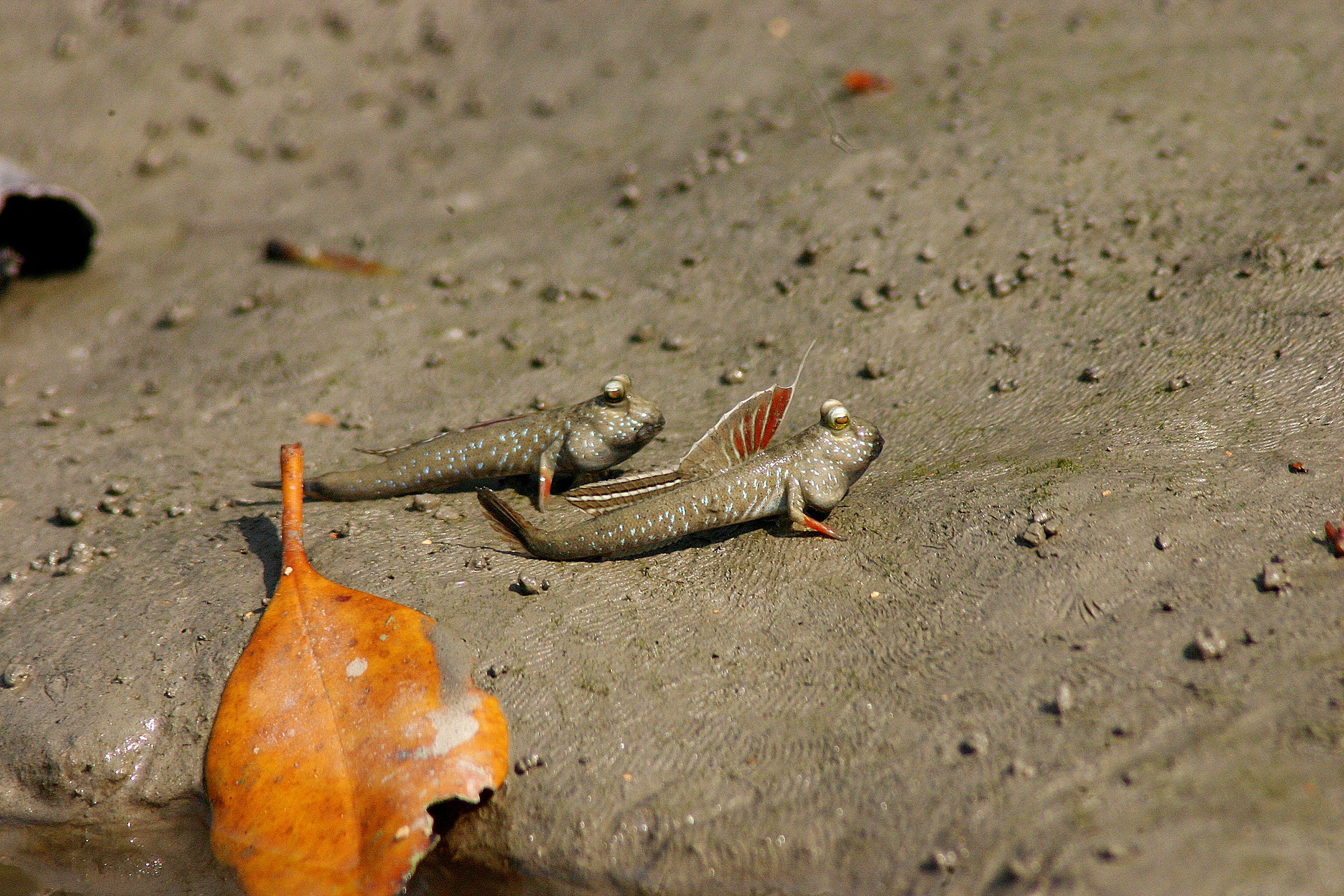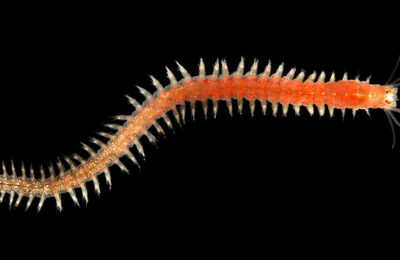Did you know, some fish can live in both water and land habitats? These amphibious fish are smarter than they look, and may hold the key to our evolutionary history.
Rossi, G.S. and Wright, P.A. Does leaving water make fish smarter? Terrestrial exposure and exercise improve spatial learning in an amphibious fish (2021). Proc. R. Soc. B 288.
DOI: 10.1098/rspb.2021.0603
From water to land
Imagine having the best of both worlds, being able to swim to the depths of the ocean but then hopping to land for some sun? Amphibious fishes, like mudskippers, blennies, and some eels, are able to leave water for extended periods of time. They can transition from water to land habitats using different locomotion techniques like tripod-like walking (using fins and tail as feet) and jumping!

Because land and water environments are so different, there are unique challenges presented to the amphibious fish. If you’ve ever been underwater, you can tell how much easier it is to move while submerged, while on land your body feels heavier making it harder to move. For a fish to move or exercise on land it requires a lot more muscle movement and has been shown to even remodel the skeletal muscles of fish. Land tends to be more structurally complex and can be difficult to navigate without a good spatial awareness. Nevertheless, there are 200 extant species of amphibious fish that can transition between water and land habitats. Scientists wondered, how this happened and if these fish are faster learners than their purely aquatic ancestors?
Testing fish smarts
Scientists from the University of Guelph, Canada used adult killifish to further examine the learning abilities of amphibious fish. Killifish, kryptolebias marmoratus, are a small fish that migrate from pond to pond by land. They can actually survive out of the water for up to 66 consecutive days!
Scientists exposed them to either 8 weeks of 1) fluctuating air-water conditions mimicking a land and water environment, 2) exercise, meaning encouraging them to jump by gently poking them with a pen, or 3) solely water environments. After the 8 weeks, the fish were put in a bifurcating T-shaped maze with a goal of reaching the bloodworm at the end. There was also a fake-out bloodworm that was inaccessible, which the fish would eventually (hopefully) learn was inaccessible. This would show how well killifish could navigate and learn from their space.

Smarter than they look
It turned out that the fish exposed to both land and water learned faster than the regular “water” fish. The fish who also exercised or jumped out of the water from the pen-poking, also performed better on the map test. These groups could find a more direct route and also spent less time trying to get the inaccessible bloodworm, which suggests they have better spatial learning abilities. The regular water fish took longer to find the bloodworms than the other groups.
Land and water amphibious fish therefore might have a cognitive advantage over solely water fish as they can successfully navigate both aquatic and terrestrial environments. This could help them be more successful at finding food than their aquatic kin. Could this be why ancestral fish successfully colonized terrestrial environments to eventually become land-dwelling? This helps to add another puzzle piece to our understanding of the evolution to terrestrial life.
I have always been happiest in nature – exploring forests, traveling to the ocean, or working with wildlife. After obtaining my MSc in Marine Environmental Management at the University of York, I have worked in conservation and marine science around the world. I have a special affinity for corals, cuttlefish, and cetaceans.
The sea, once it casts its spell, holds one in its net of wonder forever. – Jacques Cousteau



